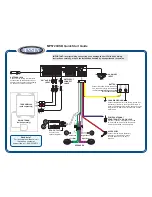
The Next Generation Cadillac User Experience (GMNA-Localizing-U.S./
Canada-12690022) - 2019 - CRC - 3/28/18
VOICE RECOGNITION
55
and visual dialog content. These
displays can be turned on or off in the
Tutorial Mode under
There are three voice prompt modes
supported:
.
Informative verbal prompts: This
type of prompt will provide more
information regarding the
supported actions.
.
Short prompts: This type of
prompt will provide simple
instructions about what can be
stated.
.
Auto informative prompts: This
type of prompt plays during the
first few speech sessions, then
automatically switches to the
short prompt after some
experience has been gained
through using the system.
If a command is not spoken, the voice
recognition system says a help
prompt.
Prompts and Infotainment Displays
While a voice recognition session is
active, there may be corresponding
options showing on the displays.
A selection can be made by manually
touching the option, or by speaking
the number for the option to select.
Manual interaction in the voice
recognition session is permitted.
Interaction during a voice session may
be completed entirely using voice
commands while some manual
commands may expedite a task. If a
selection is made using a manual
control, the voice recognition dialog
will progress in the same way as if the
selection were made using a voice
command. Once the system completes
the task, or the session is terminated,
the voice recognition dialog stops.
An example of this type of manual
intervention is touching an entry of a
displayed number list instead of
speaking the number associated with
the entry desired.
Canceling Voice Recognition
.
Touch or say
“
Cancel
”
or
“
Exit
”
to
terminate the voice recognition
session and show the display
where voice recognition was
initiated.
.
Press
i
on the steering wheel
controls to terminate the voice
recognition session and show the
display where voice recognition
was initiated.
Natural Language Commands
Most languages do not support
natural language commands in
sentence form. For those languages,
use direct commands like the
examples shown on the display.
Helpful Hints for Speaking
Commands
Voice recognition can understand
commands that are naturally stated in
sentence form or direct commands
that state the application and
the task.
For best results:
.
Listen for the prompt before
saying a command or reply.
.
Speak the command naturally, not
too fast, not too slow.
.
Use direct commands without a
lot of extra words. For example,
“
Call <name> at work,
” “
Play
”
















































